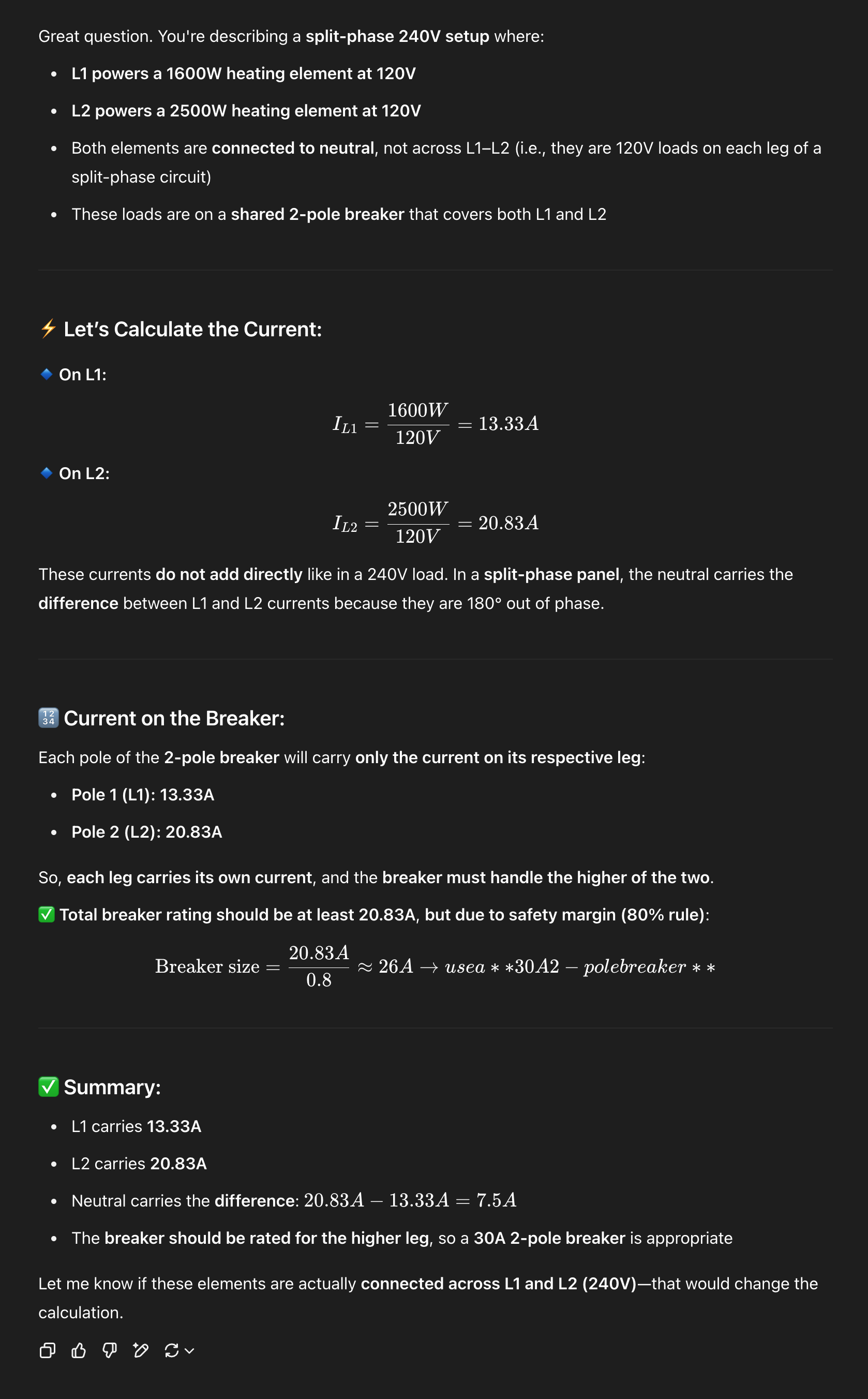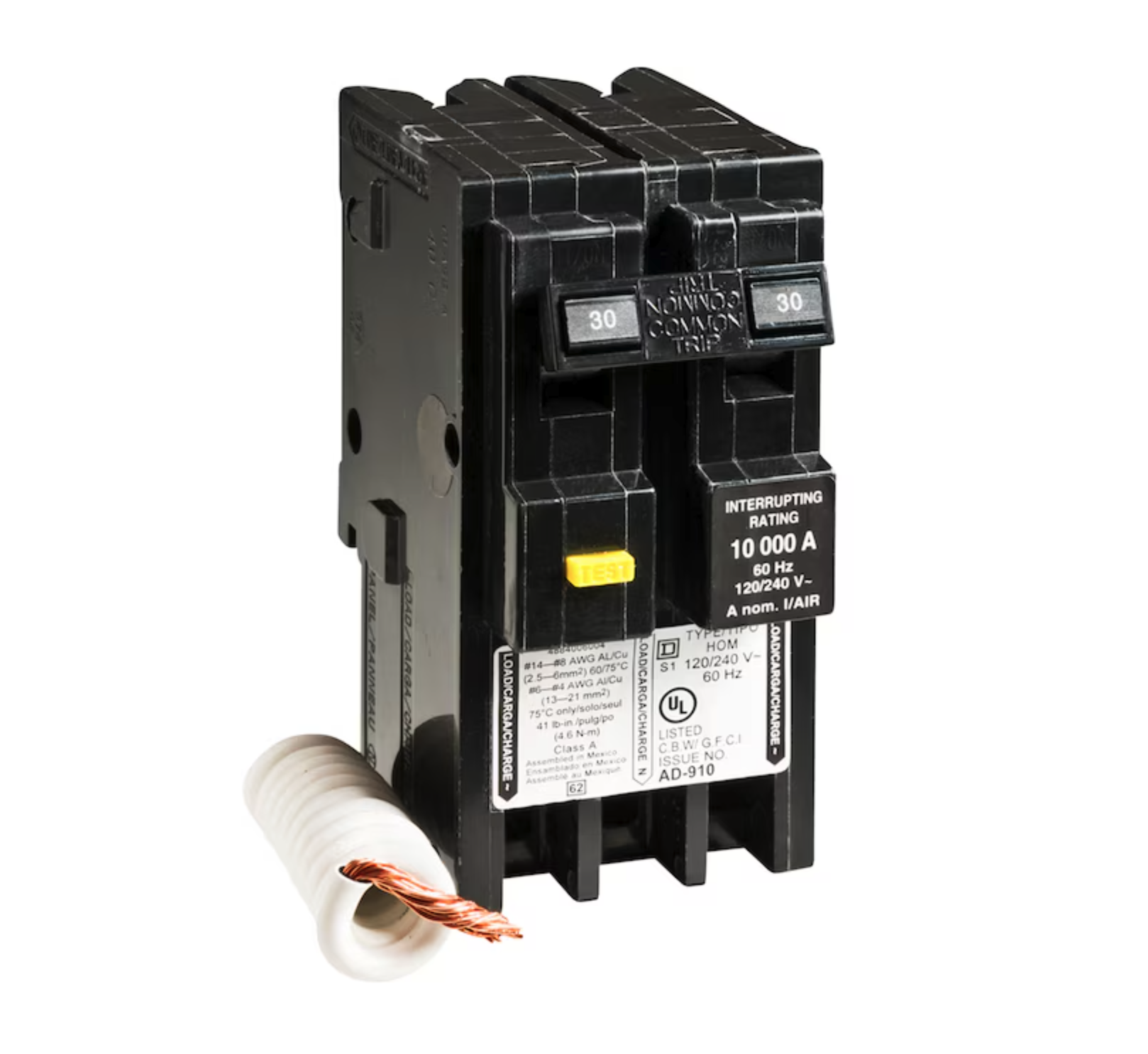- Joined
- Jan 4, 2015
- Messages
- 112
- Reaction score
- 73
I have a 3 vessel system currently running 3 elements (1600, 1650, and 5500 watt elements) on a 30 AMP breaker. I run the 16xx Watt elements (one on L1 and one on L2 for 240V wiring) that I run at the same time. I have no issues running this configuration. I use a switch to switch 240V to the 5500 Watt element that only runs by itself.
I am working on upgrading one of the 1650 Watt elements to a 2500 Watt element (120 V). Here is my understanding of the AMPs being pulled from this setup.
L1 - 1600 Watt element (13.33 AMPS)
L2 - 2500 Watt element (20.83 AMP)
That means that the neutral will carry the difference and total AMPs would be around 7.5 AMPs, which would total around 28.33 AMPs.
Is my understanding correct on the load the 30 AMP breaker will see? Is this configuration possible? I do have 2 pumps that run, I plan to put both on L1.
Please any guidance would be helpful?
Here is another post I made with details about my control panel and WIRING DIAGRAM.
I am working on upgrading one of the 1650 Watt elements to a 2500 Watt element (120 V). Here is my understanding of the AMPs being pulled from this setup.
L1 - 1600 Watt element (13.33 AMPS)
L2 - 2500 Watt element (20.83 AMP)
That means that the neutral will carry the difference and total AMPs would be around 7.5 AMPs, which would total around 28.33 AMPs.
Is my understanding correct on the load the 30 AMP breaker will see? Is this configuration possible? I do have 2 pumps that run, I plan to put both on L1.
Please any guidance would be helpful?
Here is another post I made with details about my control panel and WIRING DIAGRAM.



















![Craft A Brew - Safale BE-256 Yeast - Fermentis - Belgian Ale Dry Yeast - For Belgian & Strong Ales - Ingredients for Home Brewing - Beer Making Supplies - [3 Pack]](https://m.media-amazon.com/images/I/51bcKEwQmWL._SL500_.jpg)








































